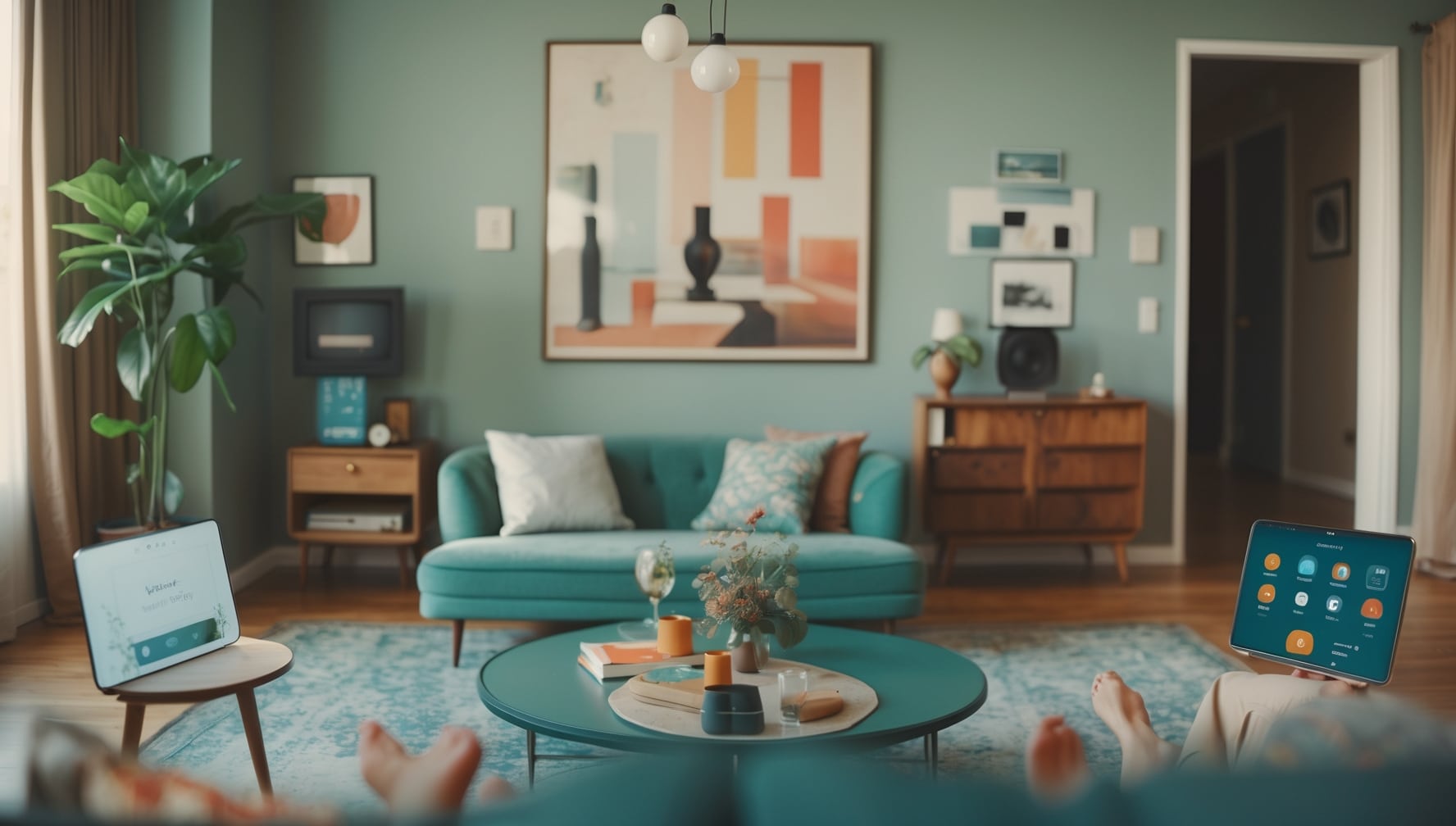Incorporating Smart Home Technology in Your Apartment

Incorporating Smart Home Technology in Your Apartment: A Renter’s Guide
Smart home technology is no longer a futuristic luxury; it’s becoming increasingly accessible and affordable, even for renters. While owning a home offers more freedom in terms of installation, renters can still leverage many smart home devices to enhance comfort, security, and convenience in their apartments. This comprehensive guide explores how renters can successfully incorporate smart home technology into their living spaces.
1. Understanding Landlord Restrictions: Navigating the Lease Agreement
Before diving into the world of smart home devices, it’s crucial to review your lease agreement. Many leases contain clauses restricting modifications to the apartment, including drilling holes in walls for mounting devices or altering electrical systems. Contact your landlord to discuss your plans and ensure you’re not violating any lease terms. Open communication can prevent future conflicts and ensure a smooth integration of smart home technology. Some landlords might even be open to subsidizing certain smart home installations, especially those that improve energy efficiency.
2. Wireless Smart Devices: The Renters’ Best Friend
Wireless smart home devices are ideal for renters as they require minimal installation and avoid any modifications to the apartment’s structure. Many smart home devices connect via Wi-Fi, simplifying setup and integration. Examples include smart speakers (like Amazon Echo or Google Home), smart plugs, smart lighting, and smart thermostats. These devices can be easily unplugged and taken with you when you move, making them a renter-friendly option. A smart plug, for example, can transform any existing lamp into a smart light, providing voice control and scheduling features without any permanent installation.
3. Smart Lighting: Setting the Mood and Saving Energy
Smart lighting offers significant advantages for renters. Smart bulbs are easily screwed into existing light fixtures, offering features like dimmable lighting, color-changing capabilities, and scheduling options. They can be controlled via a smartphone app or voice assistants, allowing you to adjust lighting levels to match your mood or automate lighting schedules. This enhances both convenience and energy efficiency, reducing electricity bills and contributing to a more sustainable lifestyle. Statistics show that smart lighting can reduce energy consumption by up to 25% compared to traditional lighting solutions.
4. Smart Security: Enhancing Safety and Peace of Mind
Smart security devices provide renters with an added layer of security and peace of mind. Wireless security cameras, smart door locks, and motion sensors can be easily installed without causing any permanent damage to the apartment. These devices can be monitored remotely via smartphone apps, offering real-time notifications and recordings. Smart door locks provide keyless entry, eliminating the need for physical keys and enabling remote access for guests. This advanced level of security can significantly deter potential intruders and provide reassurance, particularly for those living alone.
5. Smart Thermostats: Optimizing Energy Efficiency and Comfort
Smart thermostats are another excellent example of renter-friendly smart home technology. They learn your temperature preferences and adjust the heating and cooling accordingly, optimizing energy consumption and minimizing your utility bills. Many smart thermostats offer remote control via a smartphone app, allowing you to pre-heat or pre-cool your apartment before arriving home. Studies show that smart thermostats can reduce energy consumption by 10-15%, resulting in significant savings on monthly bills.
6. Smart Speakers: The Central Hub for Your Smart Home
Smart speakers like Amazon Echo or Google Home act as central hubs for your smart home ecosystem. They can control multiple smart devices, provide voice-activated commands, play music, and answer questions. By integrating your smart devices with a smart speaker, you create a centralized control system that enhances convenience and simplifies the overall smart home experience. The hands-free nature of voice control is particularly useful in situations where you are carrying groceries, cooking, or otherwise busy.
7. Smart Plugs: Transforming Existing Appliances into Smart Devices
Smart plugs are simple yet effective smart home devices that allow you to control any traditional appliance remotely. Simply plug the smart plug into an outlet and then plug your appliance into the smart plug. You can then control the appliance’s power via a smartphone app or voice assistant, enabling features such as scheduling, on/off control, and energy monitoring. This is especially useful for devices like lamps, fans, and space heaters, which can be easily automated for energy efficiency and convenience.
8. Smart Assistants and Voice Control: Streamlining Your Routine
Smart assistants like Alexa or Google Assistant significantly enhance the usability of smart home technology. Through voice commands, you can control lights, adjust the thermostat, play music, and access information without lifting a finger. This level of convenience is particularly appealing to busy renters. Smart assistants also integrate seamlessly with other smart devices, creating a cohesive and user-friendly smart home experience. The more smart devices you add, the more efficient and streamlined your routine can become.
9. Addressing Privacy Concerns: Protecting Your Data
One key concern with smart home technology is data privacy. Smart devices often collect data about your usage habits, raising concerns about potential misuse. To mitigate these risks, carefully research the privacy policies of the manufacturers and choose reputable brands with strong security measures. Consider using strong passwords and enabling two-factor authentication to further enhance your security. Regularly update your devices’ firmware to benefit from the latest security patches and keep your data protected.
Conclusion
Incorporating smart home technology into your apartment can significantly enhance your living experience. Even renters can leverage wireless smart devices to improve comfort, security, and convenience without making permanent alterations. By understanding landlord restrictions, choosing the right devices, and addressing privacy concerns, renters can transform their apartments into smart, efficient, and enjoyable living spaces. The key is to start small, choose devices that meet your needs, and gradually expand your smart home ecosystem as your budget and comfort level allow.

